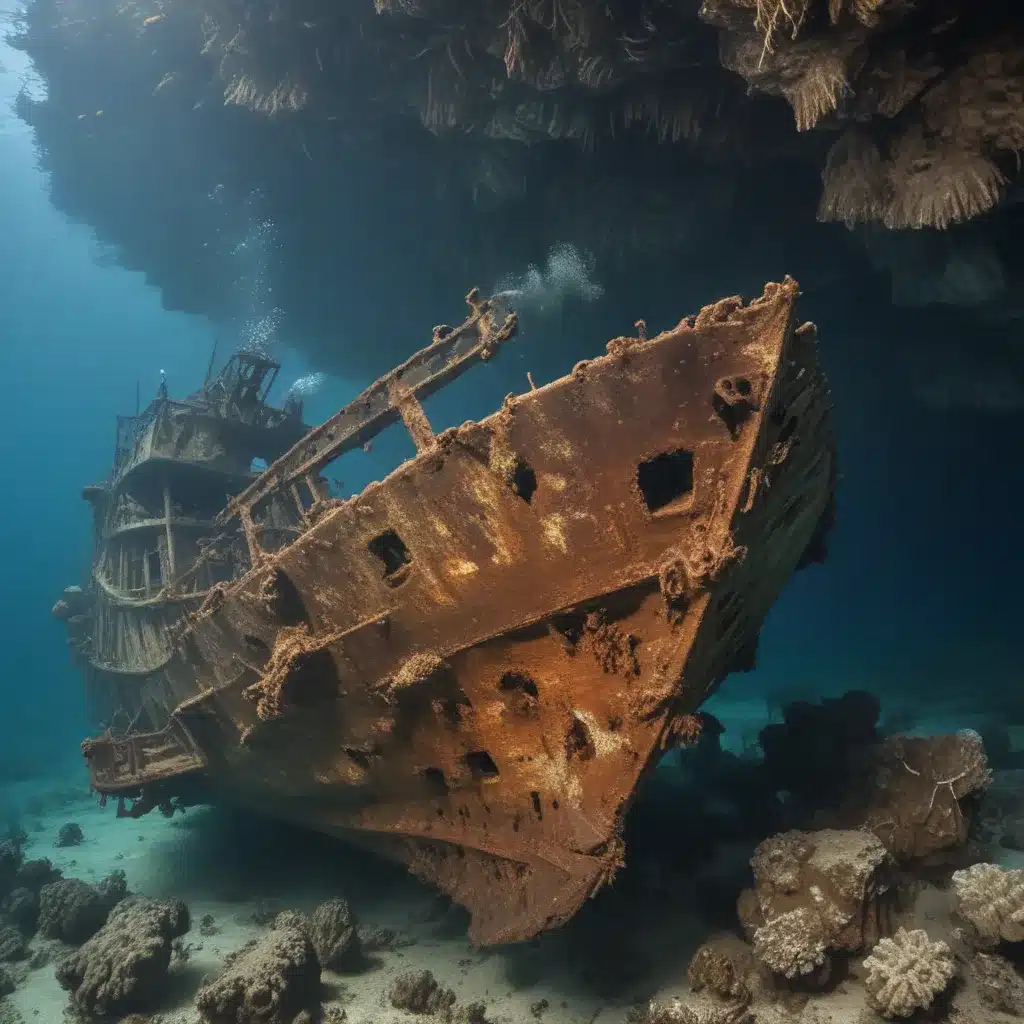
Unveiling the Watery Graves of a Forgotten War
As I step onto the wooden dock, the salty breeze caresses my face, beckoning me to dive into the crystal-clear waters surrounding Coron Island. The sun’s rays dance across the surface, hinting at the mysteries that lie beneath. I can’t help but feel a sense of anticipation and wonder – today, I’ll be exploring the sunken relics of World War II that have found their final resting place in this enchanting corner of the Philippines.
Uncovering the History Beneath the Waves
The Philippine archipelago is littered with the remnants of a bygone era – a time when mighty warships and cargo vessels plied the seas, only to be swallowed by the relentless tides of conflict. Coron Island, in particular, has become a veritable underwater museum, housing some of the most well-preserved and historically significant shipwrecks in the world.
As I don my dive gear and prepare to descend, I can’t help but wonder about the stories these wrecks hold. What battles did they witness? What cargo did they carry? And most importantly, what happened to the brave souls who manned them? With each breath of air, I’m transported back in time, my mind racing with the possibilities that await me beneath the surface.
Navigating the Underwater Labyrinth
The first dive site I explore is the Akitsushima, a Japanese seaplane tender that was sunk by American bombers in 1944. As I slowly descend, the wreck comes into view, its massive steel frame still proudly defying the passage of time. I’m struck by the level of detail preserved on the ship – the gun turrets, the propeller, even the remnants of the seaplane’s fuselage.
Carefully, I weave my way through the intricate maze of the wreck, my eyes scanning for any signs of life. The eerie silence is occasionally broken by the gentle sway of the coral, a testament to the resilience of nature in the face of human conflict. I can almost feel the weight of history pressing down on me, the stories of the past whispering in my ear.
Unlocking the Secrets of the Sunk
As I move from wreck to wreck, each site reveals its own unique insights into the events of World War II. The Lusong Gunboat, a small Japanese patrol vessel, lies on its side, its gun turret still intact and pointing skyward. The Morazan, a cargo ship sunk by a Japanese submarine, is a sprawling labyrinth of twisted metal and debris, a grim reminder of the high stakes of the war.
But it’s the Olympia, a majestic American oil tanker, that truly captures my imagination. The wreck is remarkably well-preserved, with the ship’s superstructure still largely intact. As I explore the various decks and compartments, I can almost feel the presence of the sailors who once called this vessel home. The thought of their final moments, as the ship was struck and began to sink, sends a shiver down my spine.
Diving into the Past
Each dive brings a new sense of discovery and connection to the past. I find myself captivated by the intricate details of the wrecks, the way the light filters through the water and casts an ethereal glow over the rusting metal. It’s as if the ghosts of the past are there, guiding me, sharing their stories.
But it’s not just the wrecks themselves that captivate me – it’s the marine life that has found a home among the sunken vessels. Schools of colorful fish dart in and out of the wreckage, while curious sea turtles and gentle rays glide by, seemingly unperturbed by the human presence. It’s a delicate balance, a reminder that even in the face of great destruction, life finds a way to thrive.
Honoring the Fallen
As I surface from each dive, I can’t help but feel a sense of reverence and respect for the brave men who lost their lives in these waters. The shipwrecks are not just historical relics – they are the final resting places of countless souls, their stories etched into the very fabric of the ocean floor.
I make a silent vow to honor their memory, to share their stories with others and ensure that their sacrifice is never forgotten. It’s a humbling responsibility, but one that I’m honored to take on. After all, it’s not just the wrecks themselves that captivate me – it’s the profound connection to the past that they represent, a tangible link to a time that has long since faded into history.
Diving into the Future
As I prepare to depart Coron Island, I can’t help but feel a sense of excitement for the future. The Philippine Getaway team has done an incredible job in preserving and promoting these incredible dive sites, and I’m confident that they will continue to do so for years to come.
I know that I’ll be back, drawn by the siren call of the sunken wrecks and the opportunity to uncover even more of the past. Until then, I’ll carry the memories of my dives with me, a cherished collection of experiences that have left an indelible mark on my heart and soul. After all, there’s nothing quite like diving into the past to truly appreciate the present – and to inspire hope for the future.


